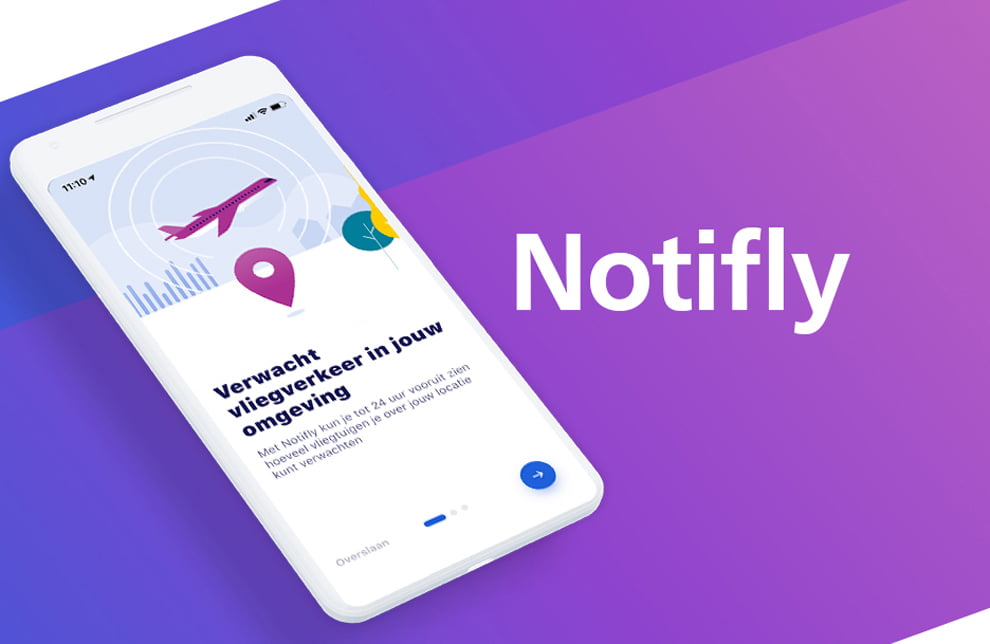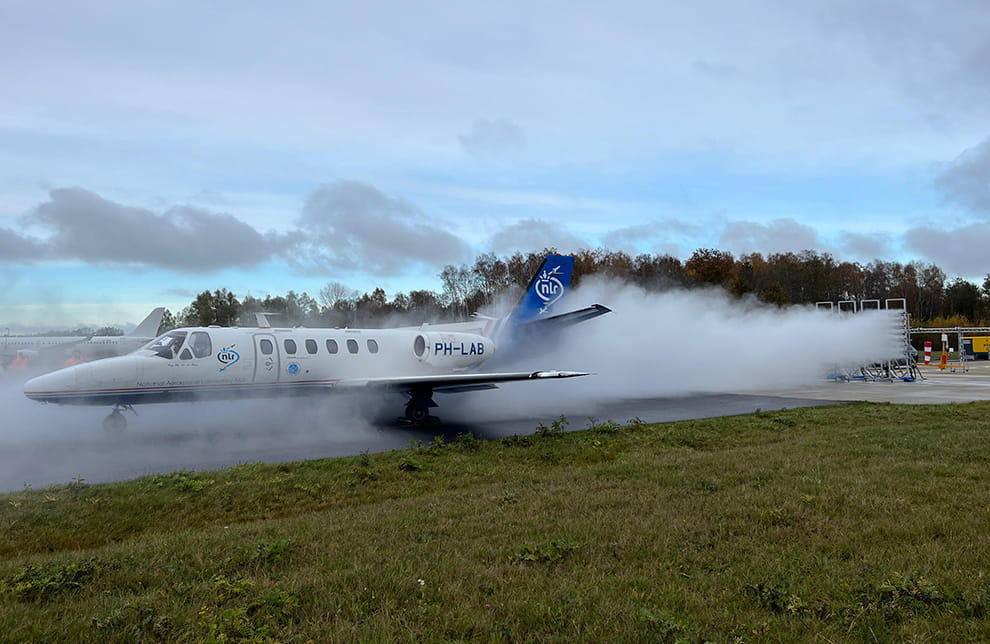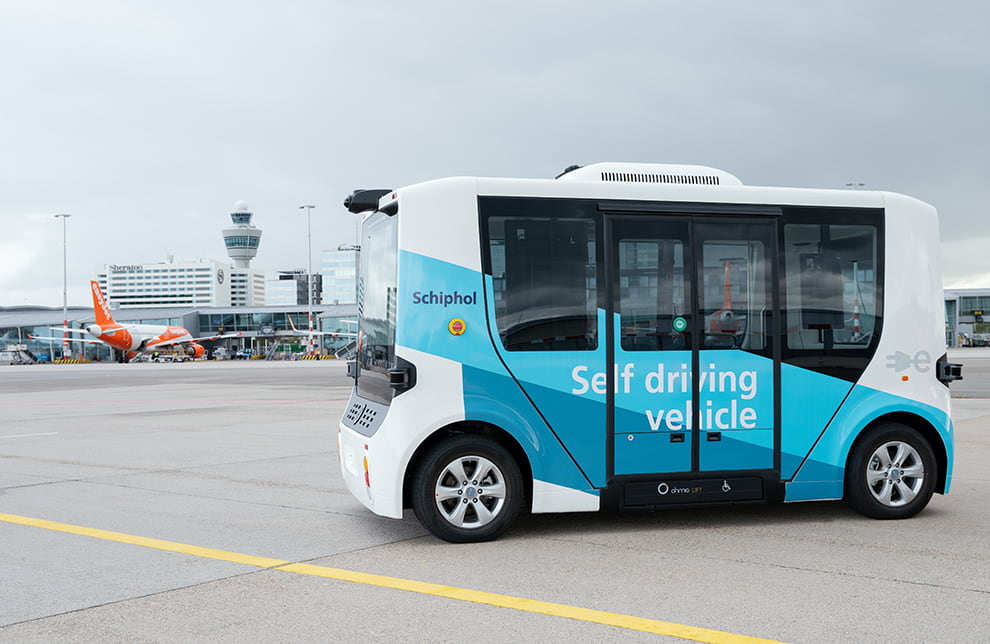Making aircraft noise more predictable: Notifly: the air traffic forecast for your area
"I'd like to be informed about which runways are being used." "I'd like an app to tell me when a plane is flying over the area where I live." "Can I be notified if flight paths suddenly change meaning I experience more disturbance?" These are some of the reactions from a study that Schiphol began in 2019 into local residents’ need for information. It found that there is significant demand for air traffic forecasts. That's why Schiphol is currently developing the Notifly app.

What is Notifly?
With Notifly on your phone or tablet, Schiphol's local residents can check the current and predicted number of aircraft flying overhead. Because you can look up to 24 hours ahead, the aircraft noise that you experience becomes more predictable. You see a per hour indication of the number of planes you can expect at your location. Notifly also shows you current runway use, (scheduled) runway maintenance and a map with live air traffic. Will there be unexpected runway maintenance, or will there be more aircraft flying over your location due to the weather conditions? Then you can opt to receive a notification that lets you know straight away why you can hear more aircraft noise.
Development with input from our neighbours
In the development of Notifly, we had various co-creation sessions and we carried out thorough tests with local residents. After all, we want the app to meet as many of their requirements as possible. We have now begun the final large-scale Notifly test with local residents. Everybody living in the area surrounding Schiphol can sign up to help test the app via this website. The feedback we get from the test will allow us to further improve the app and soon after that, all of Schiphol's neighbours will be able to download it.
How is air traffic predicted?
You can compare the Notifly air traffic forecast with an app that shows you expected rainfall. The Notifly app uses a special forecast model, containing a wide range of information such as radar data and the wind and weather conditions (KNMI), to make the predictions as accurate as possible. Imagine that the model must come up with a forecast for 2 o'clock in the morning on a Wednesday. It will look at the radar data from the same time on previous Wednesdays at the location you entered. This information is then linked to the weather, because thick cloud cover, snow or strong winds all have an impact on runway use and thus air traffic volumes. The model then looks for data with similar circumstances and comes up with an average. This is the prediction that you end up seeing in Notifly.
Notifly keeps getting better
Apps that predict rainfall are, of course, not always totally accurate. The same goes for Notifly. Fortunately, the app's forecast model is self-learning; it compares the predictions it gives with the actual number of aircraft flying overhead. Was the prediction correct? Exactly how inaccurate was prediction? The model processes all this data so that forecasts get a bit better every time.
Notifly is still in the test phase. Are you Schiphol's neighbour and do you want to give the app a try? Sign up here. Once the test is complete, we will make the final improvements to Notifly. We expect the app to be available in all app stores from April.
Read the previous blogs
-
Tap and go with your Digital Travel Credential!
Published on:Can you board and cross the border faster with a digital travel document? At the request of the EU, we are testing a DTC together with the government and KLM.

-
Test capturing ultrafine particles with droplets
Published on:We are working diligently to reduce the amount of ultrafine particles. A possibility is the use of water droplets to remove ultrafine particles from the air.

-
Autonomous Bus Initiative
Published on:Our ambition: operating the world's most sustainable and top-tier airports by 2050. With this in mind we're putting autonomous buses to the test on airside.
